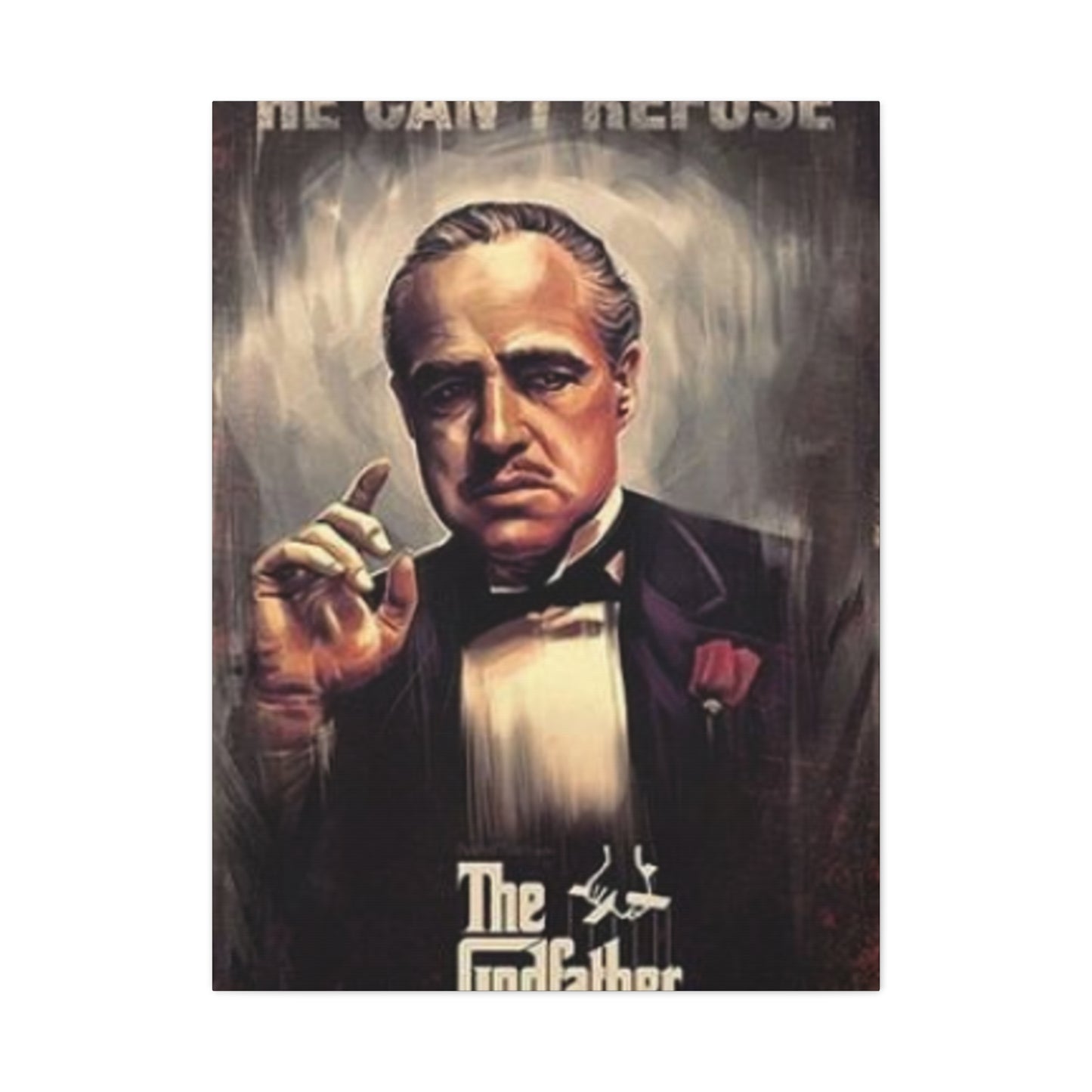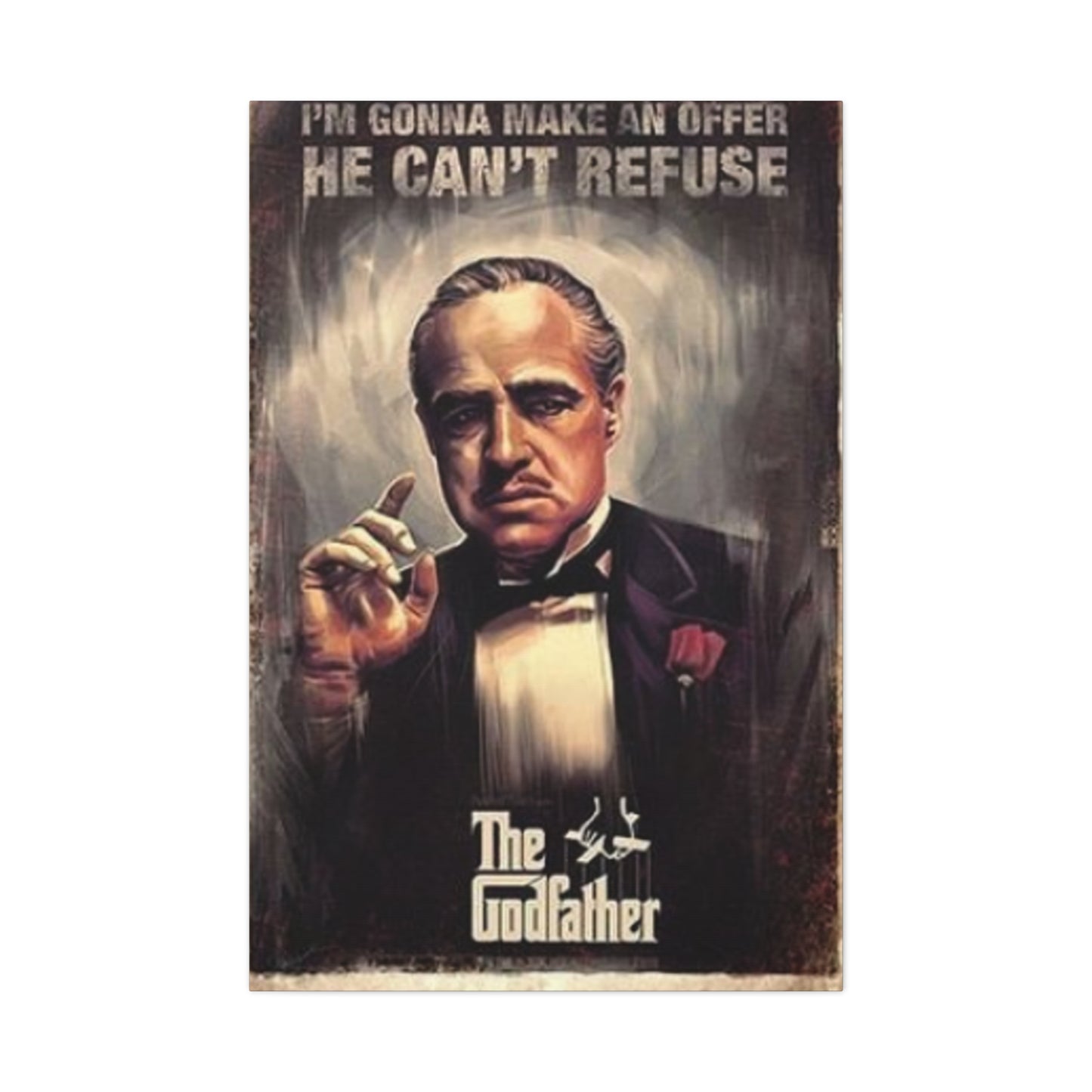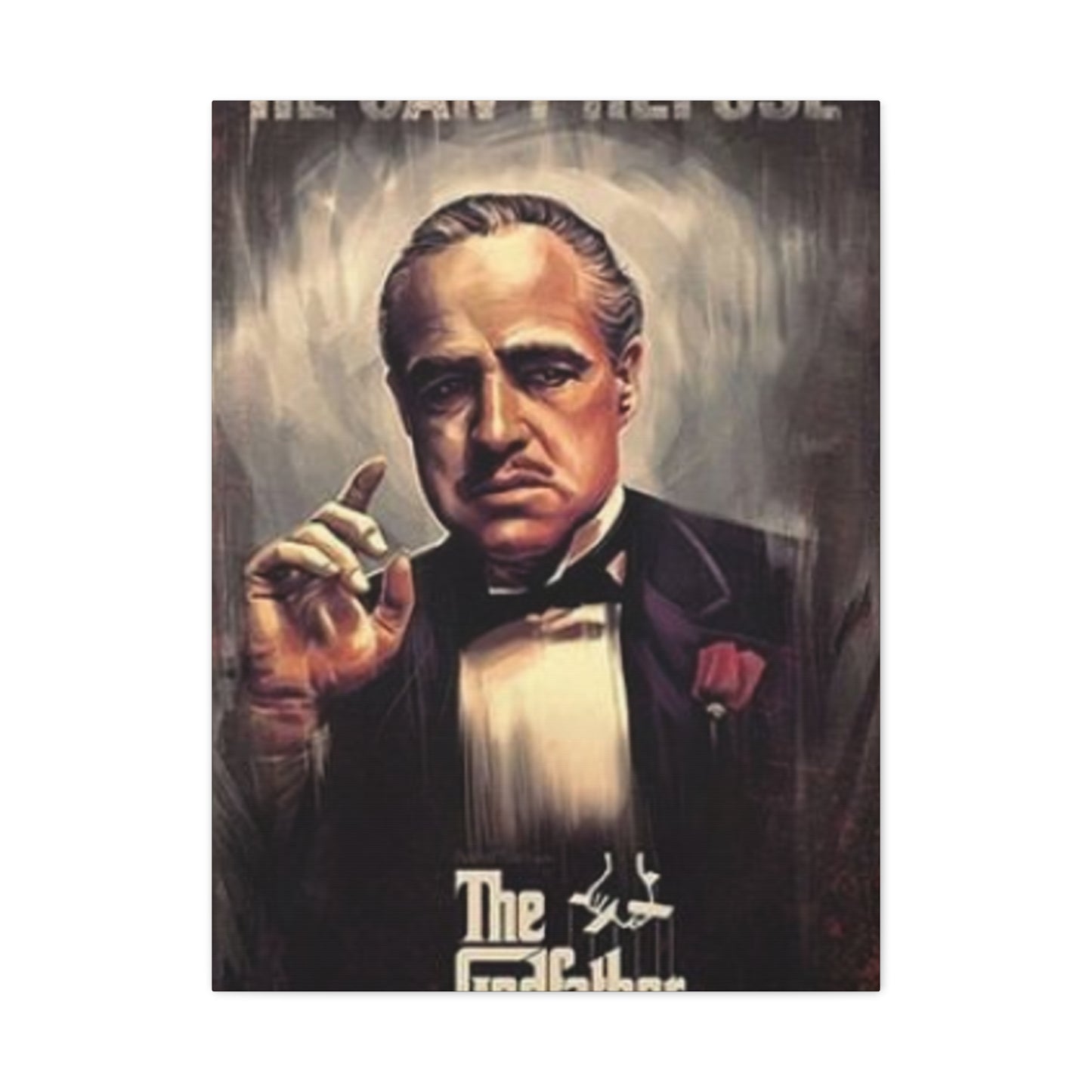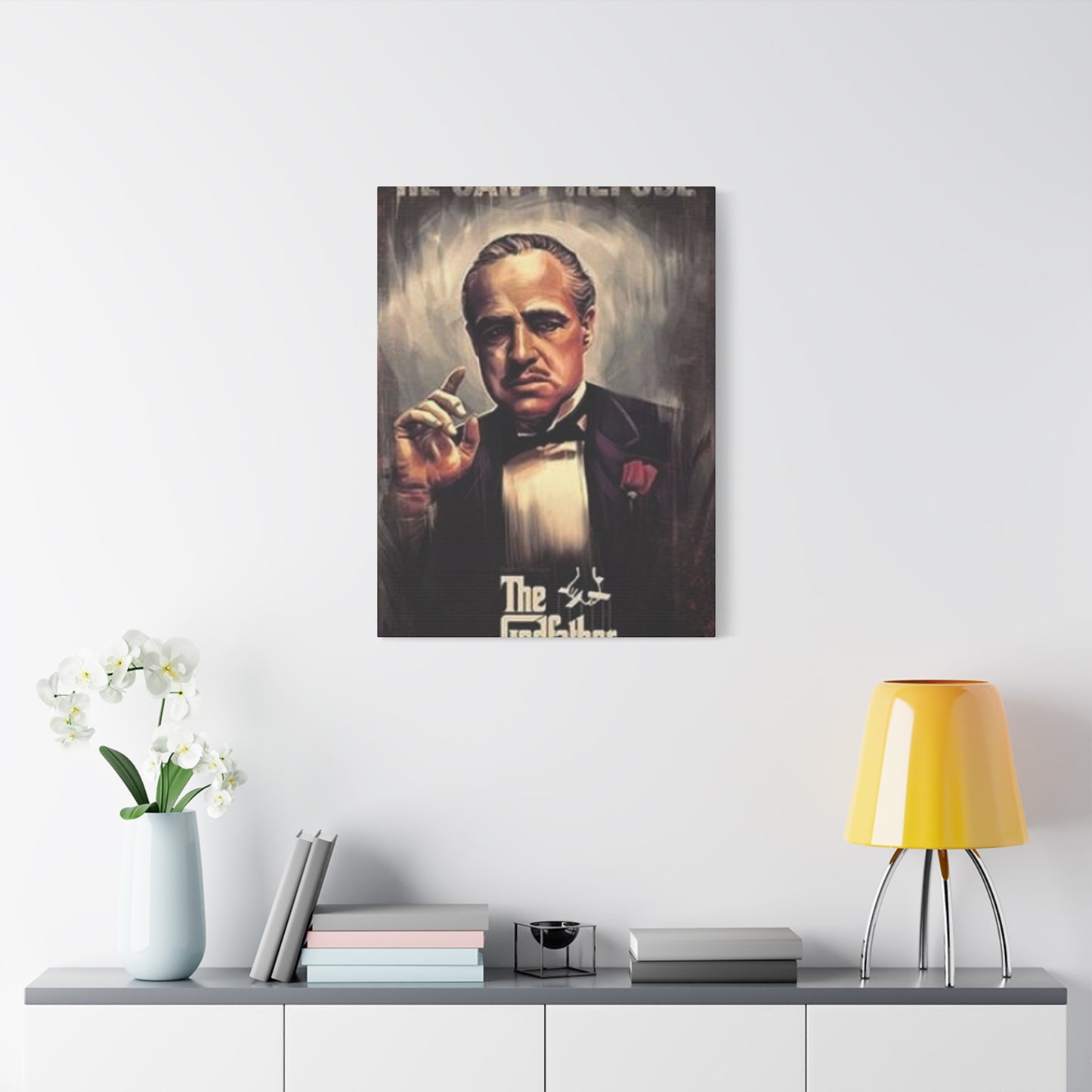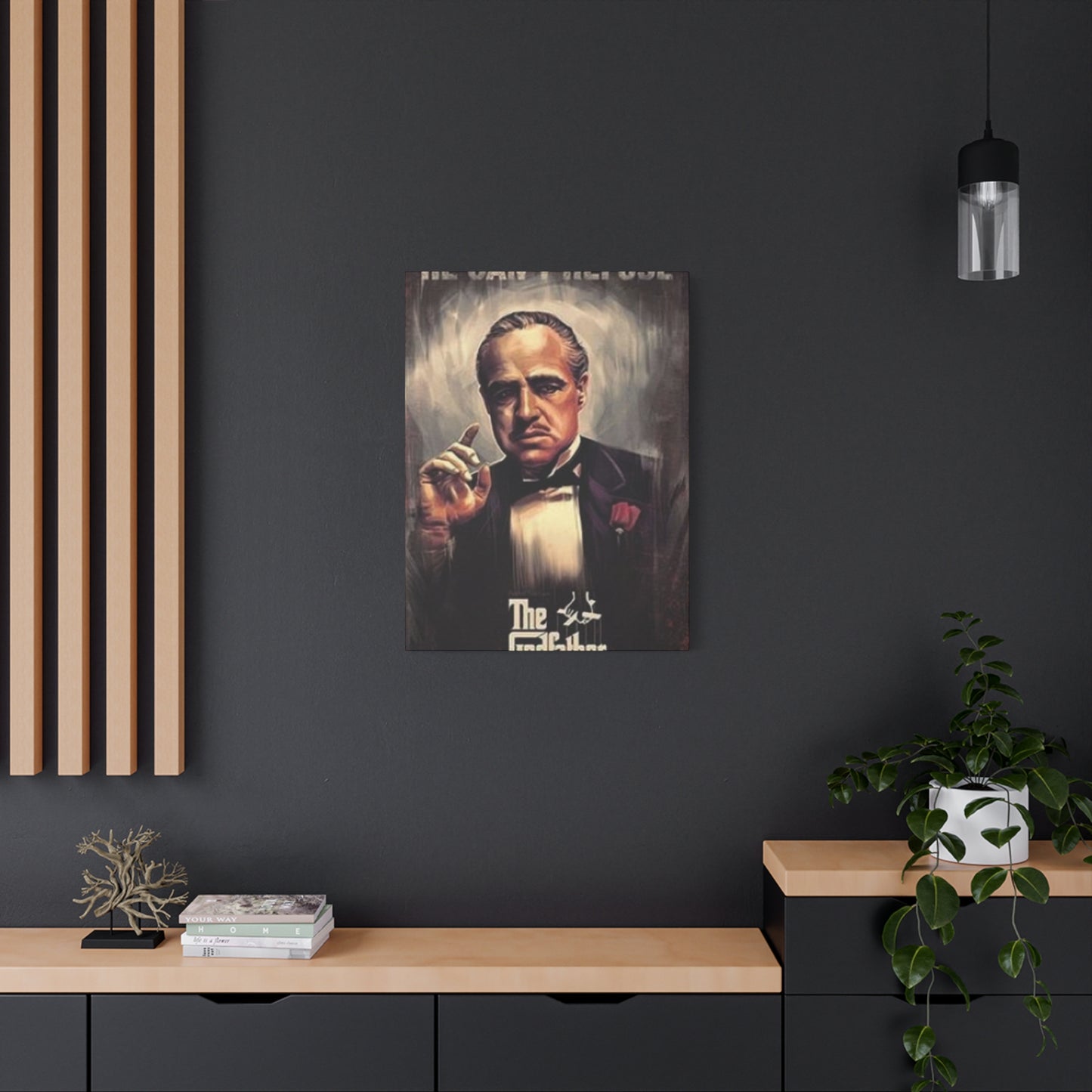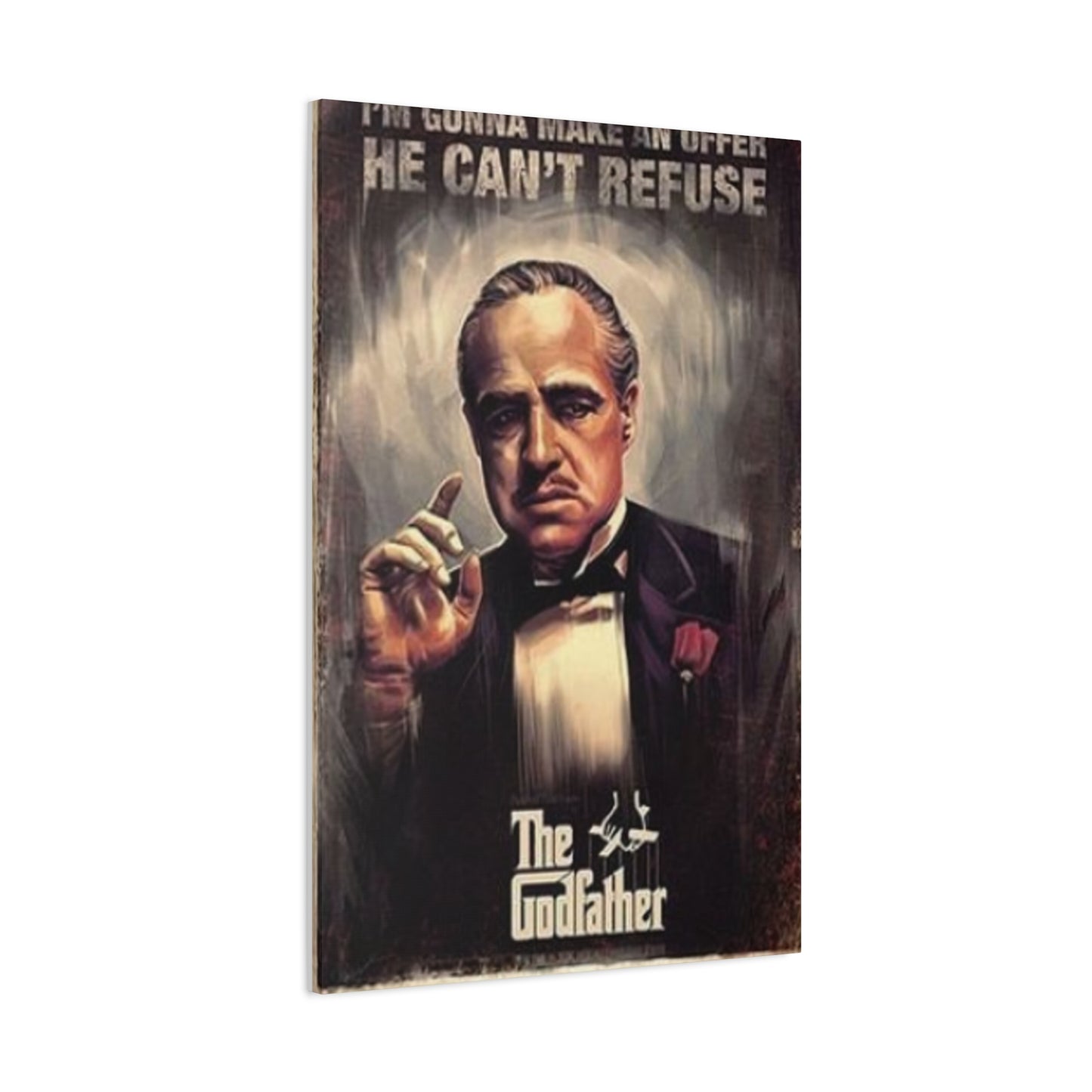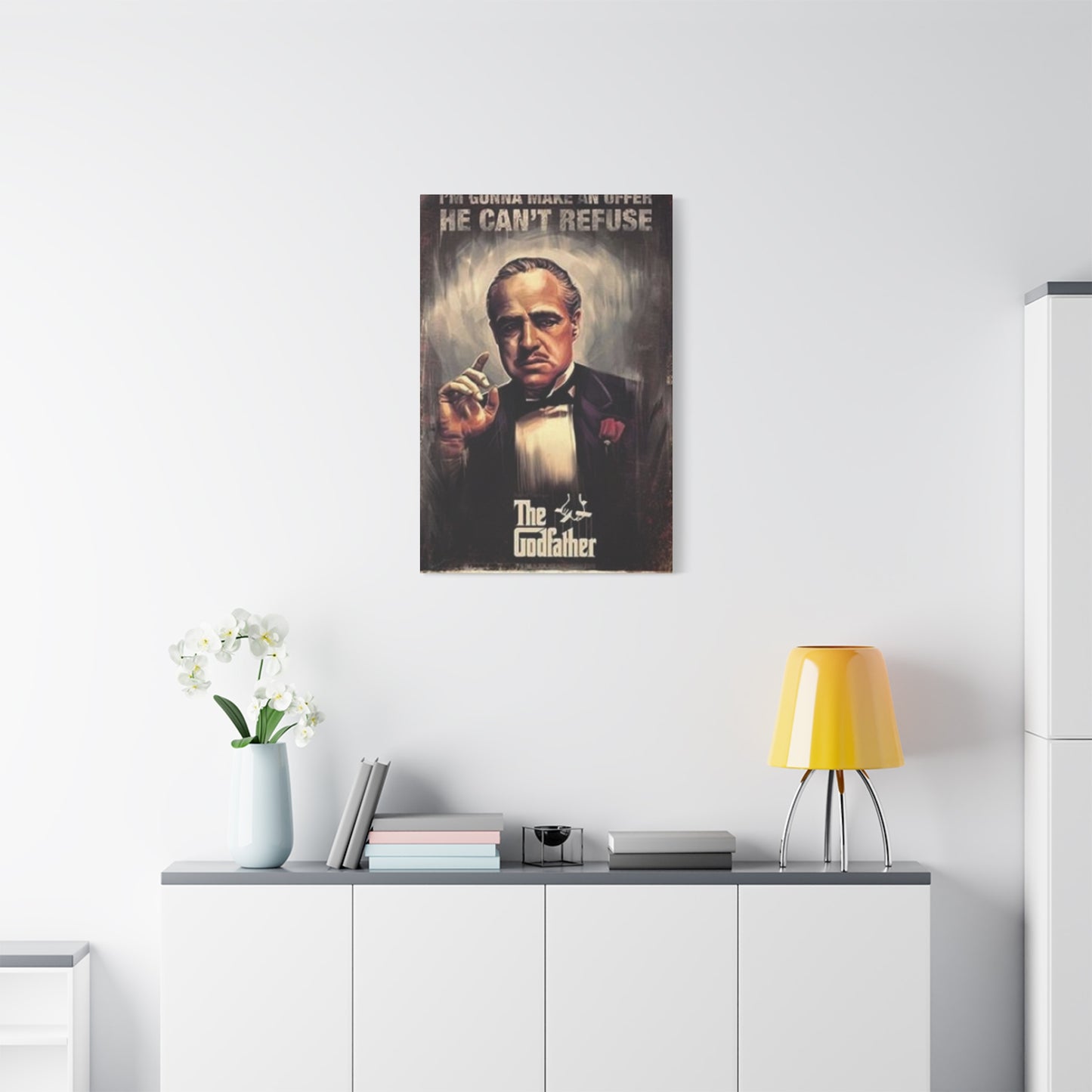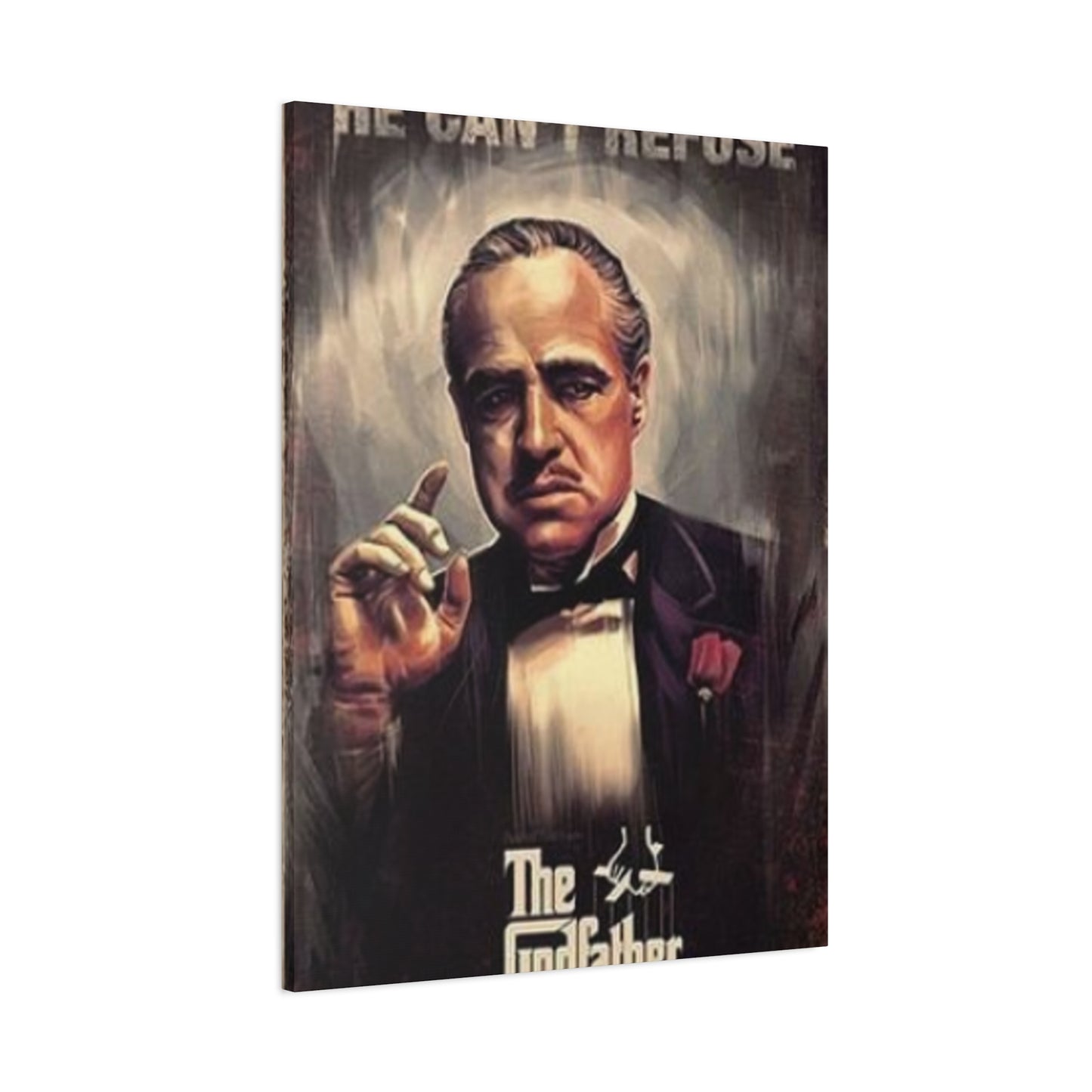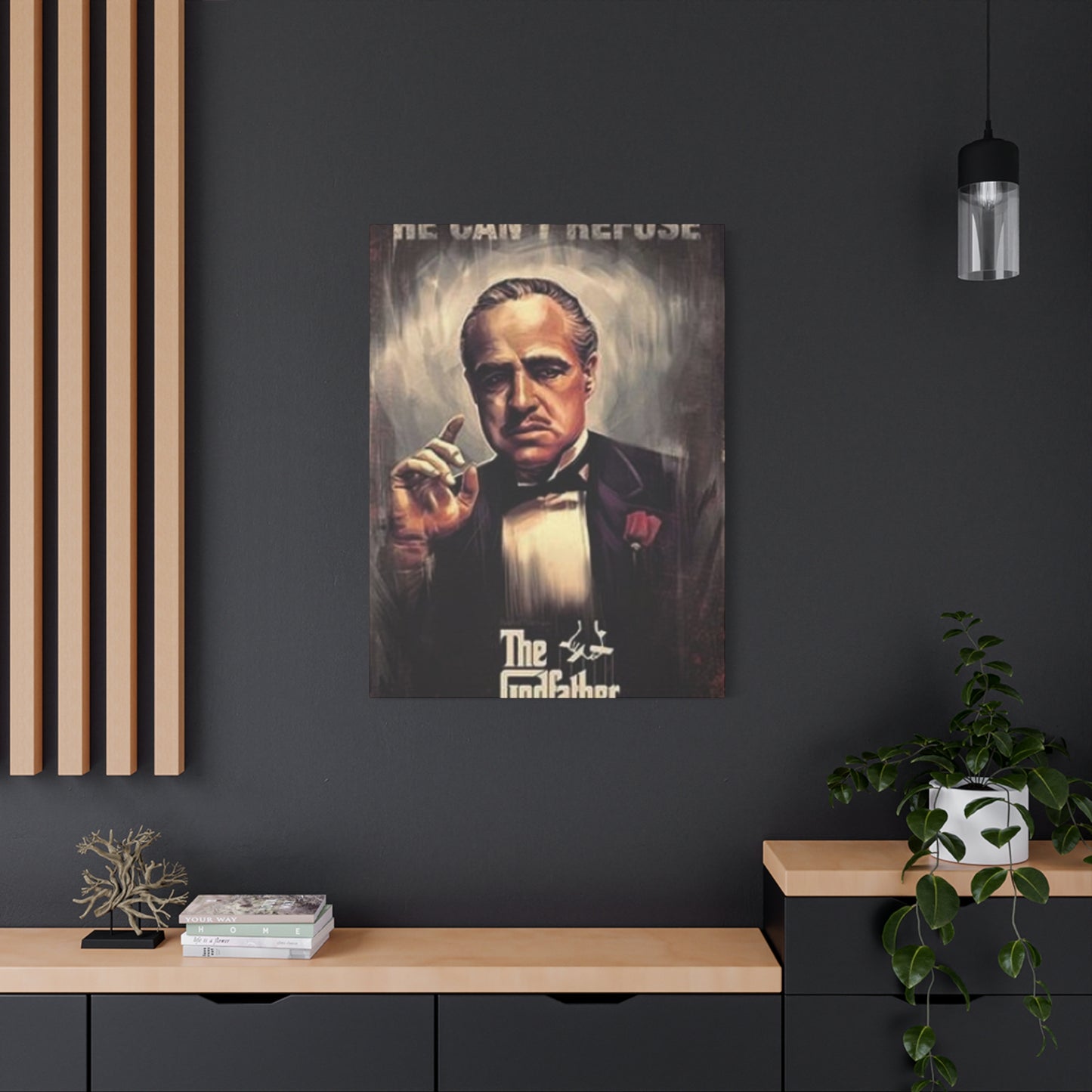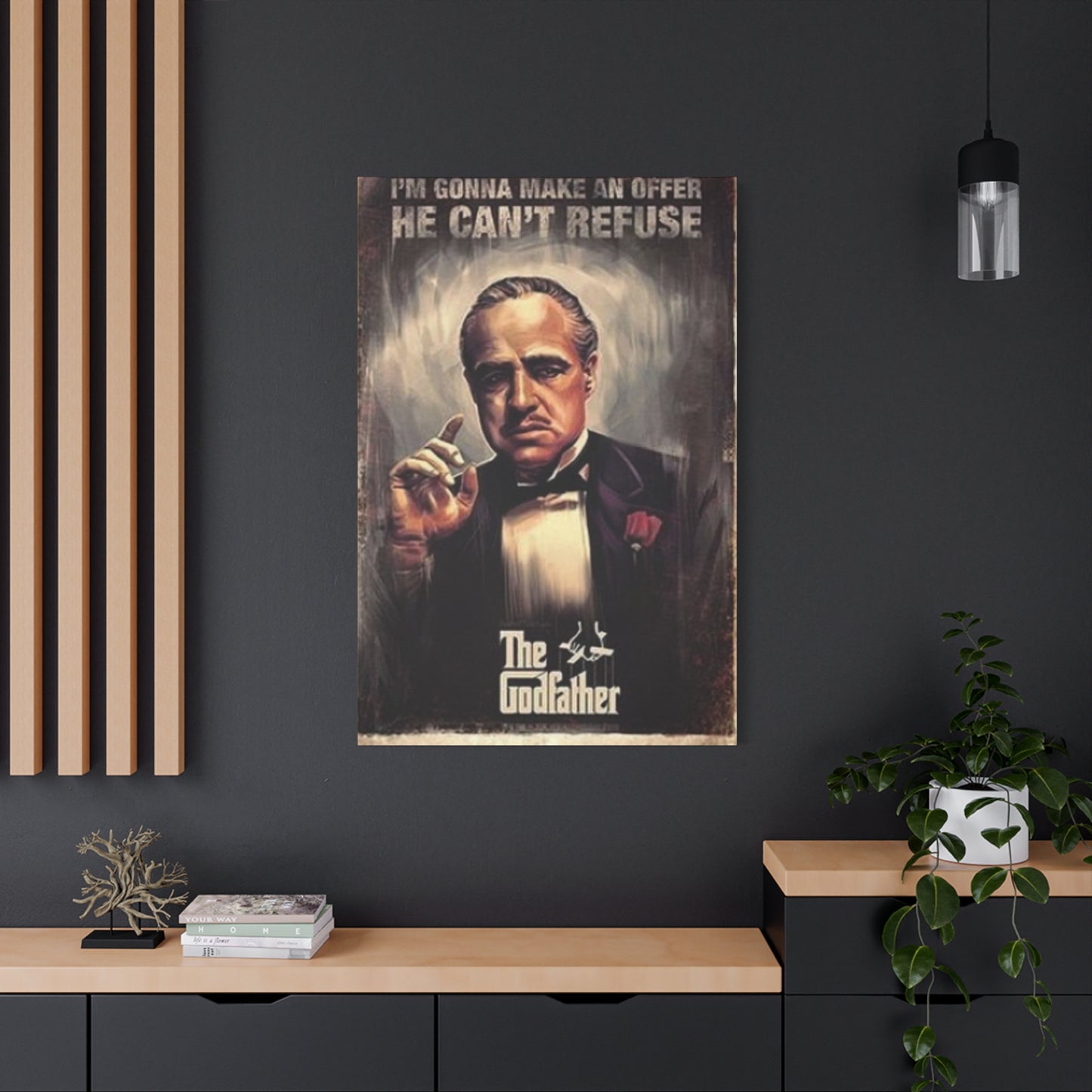The Godfather Legacy: How Man Cave Wall Art Honors a Timeless Classic
Creating a distinctive atmosphere in your personal relaxation area demands careful consideration of decorative elements that reflect your personality and interests. For enthusiasts of legendary cinema, particularly those who appreciate the golden era of organized crime narratives, incorporating visual representations from beloved films offers an exceptional opportunity to craft an environment that resonates with sophistication and cultural significance. The iconic imagery from one of cinema's most celebrated productions provides endless possibilities for transforming ordinary walls into captivating displays of artistic expression.
The concept of dedicating wall space to cinematic masterpieces has evolved significantly over recent decades, moving from simple poster displays to elaborate artistic interpretations that capture the essence of memorable scenes and characters. This evolution reflects a broader appreciation for film as an art form worthy of permanent display in our living spaces. When selecting decorative pieces featuring memorable moments from classic gangster narratives, individuals invest not merely in decoration but in a statement about their cultural interests and aesthetic preferences.
Canvas prints featuring scenes and characters from legendary mob movies offer advantages over traditional poster formats, including enhanced durability, sophisticated presentation, and the ability to integrate seamlessly with various interior design schemes. The texture and depth provided by canvas material creates a gallery-quality appearance that elevates the perceived value of the artwork while maintaining the powerful imagery that makes these films unforgettable. Whether depicting intense confrontational moments, contemplative scenes of strategic planning, or iconic character portraits, these artistic representations serve as conversation starters and focal points within any room.
Why Cinema-Inspired Artwork Resonates with Modern Collectors
The enduring popularity of classic crime dramas stems from their complex narratives, memorable performances, and exploration of themes that remain relevant across generations. These films examine loyalty, family dynamics, power structures, and moral ambiguity through compelling storytelling that transcends their specific historical settings. When translated into visual art for home display, these elements combine to create pieces that carry emotional weight and cultural significance beyond mere decoration.
Collectors and enthusiasts gravitate toward imagery from these productions for multiple interconnected reasons. First, the visual composition of scenes from masterfully directed films provides inherently strong artistic material, with careful attention to lighting, framing, and symbolic elements that professional cinematographers labored to perfect. Second, personal connections to specific characters or moments create emotional resonance that transforms artwork from passive decoration into meaningful personal expression. Third, displaying these pieces signals cultural literacy and appreciation for cinematic excellence to visitors and guests.
The psychological impact of surrounding yourself with imagery that holds personal significance should not be underestimated. Environmental psychology research demonstrates that our physical surroundings influence mood, productivity, and overall well-being. Choosing decorative elements that reflect genuine interests rather than generic alternatives creates spaces that feel authentically personal and emotionally supportive. For those who find inspiration in the strategic thinking, complex relationships, and dramatic narratives of classic mob films, incorporating related artwork reinforces these connections daily.
Canvas prints featuring these themes also benefit from the inherent masculinity and sophistication associated with the genre. The aesthetic typically combines dark color palettes, dramatic lighting, period-appropriate styling, and powerful compositional elements that convey authority and refinement. These visual characteristics align perfectly with design goals for personal spaces intended to serve as retreats from daily obligations, where individuals can relax, entertain close friends, or engage in leisure activities in an environment that reflects their identity.
Selecting the Perfect Artistic Representation for Your Space
Choosing appropriate wall art requires balancing multiple considerations including available wall dimensions, existing color schemes, lighting conditions, and the overall atmosphere you wish to create. Canvas prints come in various sizes ranging from modest accent pieces to commanding statement works that dominate entire walls. Understanding how different sizes function within a space helps ensure your selection achieves the desired visual impact without overwhelming or underwhelming the area.
Smaller canvas prints, typically ranging from twelve to twenty-four inches in their longest dimension, work excellently as components of gallery walls where multiple pieces combine to create a cohesive display. This arrangement style allows for mixing images from various scenes or combining character portraits with symbolic imagery related to the film's themes. Gallery walls also provide flexibility for future expansion as collections grow and interests evolve over time. The key to successful gallery wall implementation lies in maintaining consistent framing or canvas depths while allowing varied sizes to create visual interest through intentional asymmetry.
Medium-sized pieces, generally between thirty and forty-eight inches, serve as ideal focal points above furniture such as sofas, entertainment centers, or bars. These dimensions provide substantial visual presence without requiring excessive wall space, making them versatile options for rooms of various sizes. When positioned at appropriate heights, typically with the center of the artwork at eye level for a standing viewer, these pieces naturally draw attention and anchor the surrounding design elements. Color coordination between the artwork and nearby furnishings enhances cohesion while strategic contrasts create dynamic visual tension that keeps spaces interesting.
Large-format canvas prints exceeding forty-eight inches in any dimension make bold statements that transform walls into dramatic focal points. These impressive pieces work best on expansive, uninterrupted wall surfaces where their scale can be fully appreciated without competing visual elements. In spacious areas like basement entertainment rooms, home theaters, or dedicated lounging spaces, oversized canvases featuring iconic scenes create immersive experiences that transport viewers into the world depicted. The investment in large-format pieces typically reflects serious commitment to both the subject matter and overall interior design vision.
Understanding Canvas Print Quality and Production Methods
Not all canvas prints achieve equal quality levels, and understanding the factors that distinguish superior products from inferior alternatives empowers better purchasing decisions. The printing process, canvas material composition, stretching techniques, and finishing treatments all contribute significantly to the final product's appearance and longevity. Educating yourself about these elements ensures investment in pieces that maintain their visual appeal for years rather than degrading rapidly.
High-quality canvas prints utilize giclée printing technology, which employs specialized inkjet printers capable of producing exceptionally fine detail with accurate color reproduction. This process uses archival-quality pigment-based inks rather than dye-based alternatives, resulting in prints that resist fading when exposed to normal indoor lighting conditions. The term giclée, derived from French meaning "to spray," reflects the precise ink application method that creates smooth gradients and sharp details impossible with conventional printing techniques. When examining potential purchases, inquire about whether giclée processes were used, as this often indicates commitment to quality.
The canvas material itself varies considerably in weight, texture, and composition. Premium canvases typically consist of cotton or poly-cotton blends with sufficient weight to maintain structural integrity when stretched while providing appropriate texture for artistic presentation. Lighter-weight materials may wrinkle, sag, or develop distortions over time, particularly in larger formats where material stress increases. The canvas weave pattern also affects final appearance, with finer weaves producing smoother surfaces better suited to detailed imagery while coarser weaves create more pronounced textures that work well for stylized or artistic interpretations.
Proper stretching and mounting constitute critical steps often overlooked in lower-quality productions. Canvas should be stretched tautly over wooden frames, called stretcher bars, constructed from kiln-dried wood that resists warping. The stretching process requires specialized equipment and expertise to achieve uniform tension across the entire surface without creating waves, puckering, or loose areas. Gallery-wrapped canvases, where the image continues around the sides of the frame, require additional material and careful alignment to maintain visual continuity. The depth of stretcher bars, typically ranging from three-quarters of an inch to two inches, affects the dimensional presence of the finished piece, with deeper frames creating more substantial shadows and visual weight.
Protective coatings applied to finished canvas prints serve multiple functions including UV resistance, moisture protection, and ease of cleaning. These treatments, typically sprayed or brushed onto completed prints, create invisible barriers that extend the artwork's lifespan significantly. High-quality protective coatings should not alter the appearance of the underlying image through unwanted gloss, color shifts, or texture changes. When properly applied, these finishes allow gentle cleaning with slightly damp cloths to remove dust and minor surface contamination without damaging the print.
Color Schemes and Visual Themes in Mob Movie Artwork
The visual language of classic organized crime films relies heavily on specific color palettes and lighting techniques that cinematographers developed to reinforce narrative themes and emotional tones. Understanding these visual conventions helps in selecting artwork that achieves desired atmospheric effects within your space. The predominant color schemes typically feature rich, dark tones punctuated by strategic highlights that draw attention to key elements within compositions.
Deep browns, charcoal grays, and near-black backgrounds create foundations that convey sophistication, mystery, and the morally ambiguous world these films explore. These dark tones also serve practical functions in interior design by anchoring spaces visually and providing contrast against lighter furnishings or architectural elements. When incorporated into personal relaxation areas, dark-toned artwork contributes to cozy, enveloping atmospheres conducive to unwinding and entertainment. The psychological associations with these colors include power, elegance, and timelessness, all desirable qualities for spaces designed around masculine aesthetics.
Warm accent colors including amber, gold, burgundy, and rich reds appear frequently in imagery from these films, often representing passion, danger, family bonds, or wealth. The strategic use of warm tones against predominantly cool or neutral backgrounds creates visual focal points that guide viewer attention to significant elements within compositions. In character portraits, warm lighting on faces conveys humanity and complexity while shadows suggest hidden depths and moral ambiguity. When selecting artwork for your space, consider how these warm accents will interact with existing color schemes, either complementing similar tones in furnishings or providing dynamic contrast.
Desaturated color palettes, where colors appear muted rather than vibrant, contribute to the period authenticity and serious tone appropriate to these narratives. This treatment prevents artwork from feeling cartoonish or overly decorative while maintaining visual interest through careful tonal variations. The subdued color approach also ensures the artwork remains compatible with diverse interior design styles rather than clashing with color schemes. Whether your space features contemporary minimalism, traditional richness, or industrial elements, appropriately desaturated imagery integrates smoothly.
Black and white or sepia-toned interpretations offer alternative approaches that emphasize composition, lighting, and emotional expression while eliminating color considerations entirely. These monochromatic treatments evoke nostalgia for earlier cinematic eras and allow focus on the powerful performances and directorial choices that make scenes memorable. Black and white artwork also provides maximum decorating flexibility, coordinating effortlessly with any color scheme while maintaining sophisticated visual presence. The timeless quality of monochrome imagery ensures these pieces remain stylistically relevant regardless of changing color trends in interior design.
Iconic Scenes and Characters Worth Featuring
The most celebrated organized crime film contains numerous scenes and character moments that have achieved cultural icon status, making them particularly effective subjects for wall art. Selecting which specific imagery to display involves balancing personal favorites with compositions that translate well to static visual format and complement your space's intended atmosphere. Certain scenes possess inherent compositional strength that makes them natural choices for artistic representation.
Opening sequences often establish visual themes and introduce key characters in ways that encapsulate the film's essence efficiently. These carefully constructed introductions provide rich material for artwork, combining symbolic elements with character establishment. The measured pacing and deliberate composition of introductory scenes typically feature strong visual anchors including significant props, meaningful settings, and character positioning that communicates relationships and power dynamics. When displayed as wall art, these images convey narrative complexity even to viewers unfamiliar with specific plot details.
Confrontational moments, while potentially intense, offer dramatic compositions featuring strong emotional content and dynamic character interactions. The tension inherent in these scenes translates to visually compelling artwork that commands attention and generates strong viewer responses. Careful cropping and framing can emphasize particular aspects of confrontations while moderating intensity to appropriate levels for personal spaces. These scenes typically showcase exceptional acting performances captured through close-up cinematography that reveals subtle expressions and unspoken communication.
Contemplative scenes featuring characters in moments of reflection, strategic planning, or private vulnerability provide counterpoints to high-intensity drama while revealing depth and complexity. These quieter moments often feature beautiful cinematography with careful attention to lighting, setting details, and symbolic elements that reward extended viewing. Artwork depicting contemplative scenes creates sophisticated atmospheres that encourage relaxation and personal reflection, making them particularly appropriate for intimate spaces designed for unwinding.
Family gathering scenes represent crucial thematic elements exploring the intersection between domestic life and criminal enterprise. These moments highlight the contradictions and tensions at the narrative's heart while showcasing ensemble casts and elaborate period settings. The warmth and conviviality of family scenes provide more approachable imagery that maintains connection to the source material while avoiding potentially off-putting intensity. For spaces that serve entertainment functions or host gatherings, artwork depicting communal moments reinforces hospitality themes.
Character portraits focusing on individual personalities allow for exploring the complex figures that populate these narratives. The most memorable characters from classic mob films possess distinctive visual characteristics including period-appropriate styling, meaningful props, and signature expressions that make them instantly recognizable. Portrait-oriented artwork works particularly well in vertical spaces or when creating gallery walls where multiple characters can be displayed together, representing different aspects of the fictional world's social hierarchy and interpersonal dynamics.
Installation Techniques for Canvas Prints
Properly installing canvas artwork ensures both security and optimal visual presentation while protecting walls from damage. Unlike framed prints requiring picture hanging wire and traditional hooks, canvas prints typically feature different mounting hardware that influences installation approaches. Understanding your options and selecting appropriate techniques for your specific wall types and artwork dimensions prevents frustration and potential damage to both walls and artwork.
Gallery-wrapped canvas prints often include mounting brackets, sawtooth hangers, or hanging wire pre-installed on the stretcher bars. These hardware options vary in weight capacity and installation requirements, making it essential to verify that provided hardware suits your artwork's dimensions and weight. Smaller pieces under thirty inches and weighing less than ten pounds typically mount successfully using picture hangers designed for drywall, which feature angled nails that distribute weight along wall surfaces rather than relying solely on nail friction. For plaster walls, similar hangers work effectively provided you locate the nails carefully to avoid causing cracking.
Medium to large canvas prints require more substantial mounting solutions to ensure security and prevent accidents. Wall anchors, particularly threaded drywall anchors or toggle bolts, provide significantly greater holding capacity than simple picture hangers. Installation involves drilling appropriately sized pilot holes, inserting anchors, then securing hanging hardware to the anchors with appropriate screws. While this approach requires more effort initially, the security provided justifies the investment, particularly for valuable artwork or pieces hung above frequently occupied areas like seating.
Locating wall studs provides optimal mounting points for heavy or large-format canvas prints, as studs offer solid attachment points capable of supporting substantial weight. Stud finders, available at hardware stores, detect the wooden framing members behind drywall or plaster, allowing precise placement of screws or picture hangers. When stud locations don't align perfectly with desired artwork positioning, consider using two mounting points where one attaches to a stud while the other uses a high-quality wall anchor. This combination approach distributes weight between secure mounting points.
Picture hanging systems using rail-mounted hooks offer flexibility for frequently rearranging artwork or displaying collections that evolve over time. These systems involve installing horizontal rails near ceiling height with adjustable cables or rods that drop down to support artwork at desired heights. While requiring more extensive initial installation, picture rail systems eliminate the need for new holes each time artwork gets repositioned. The clean, gallery-like appearance of these systems appeals to collectors who view their displays as evolving exhibitions rather than permanent installations.
Professional installation services provide expertise for particularly valuable pieces, complex arrangements, or situations where wall composition creates uncertainty. Many framing shops and dedicated art installation services offer mounting assistance, often including consultations about optimal positioning and lighting. While involving additional expense, professional installation ensures proper techniques and typically includes guarantees against installation-related damage. For significant investments in artwork or when dealing with challenging architectural features, professional assistance often proves worthwhile.
Lighting Considerations for Canvas Artwork
Appropriate lighting dramatically affects how canvas prints appear and how effectively they serve as focal points within spaces. Understanding different lighting approaches and their effects on artwork helps create presentations that maximize visual impact while protecting prints from damage. The interplay between ambient lighting, accent lighting, and natural light sources requires careful consideration to achieve optimal results.
Natural daylight, while providing excellent color rendering and creating dynamic changes throughout the day, poses risks to artwork through ultraviolet radiation exposure that causes gradual fading. Direct sunlight presents particular dangers, potentially damaging prints within months rather than years. When positioning canvas artwork, avoid locations where direct sun exposure occurs regularly, particularly during intense midday periods. Windows with UV-filtering treatments or sheer curtains that diffuse incoming light reduce risks while still allowing natural illumination to enhance spaces during daytime hours.
Ambient room lighting from ceiling fixtures, recessed lights, or lamps establishes baseline illumination that affects overall artwork visibility. When planning spaces, consider how ambient lighting levels and color temperatures influence artwork appearance. Warmer color temperatures, typically around 2700 to 3000 Kelvin, enhance the warm tones prevalent in classic mob movie imagery while creating cozy atmospheres. Cooler color temperatures above 4000 Kelvin produce more clinical appearances that may undermine the sophisticated mood these spaces typically aim to achieve. Dimmer controls allow adjusting ambient lighting to suit different activities and times of day while creating flexibility for highlighting artwork under various conditions.
Accent lighting specifically directed at artwork creates dramatic presentations that emphasize pieces as focal points while adding depth to spaces through layered illumination. Picture lights, adjustable track lighting, or recessed directional fixtures can provide focused illumination that makes artwork command attention even in well-lit rooms. The key to effective accent lighting involves balancing intensity to create emphasis without overwhelming viewers or creating harsh reflections that interfere with viewing. Aim for accent lighting approximately two to three times brighter than ambient lighting for sufficient contrast without excessive disparity.
LED lighting technology offers significant advantages for artwork illumination including minimal heat generation, excellent energy efficiency, and long operational lifespans. Unlike incandescent or halogen alternatives that produce substantial heat potentially damaging artwork, LED fixtures remain cool during operation while providing consistent output. The color rendering capabilities of quality LED products have improved dramatically, now offering natural color reproduction suitable for artwork display. When selecting LED fixtures for accent lighting, verify the Color Rendering Index value, with ratings above 90 ensuring accurate color representation.
Adjustable positioning for accent lights allows customization of illumination angles to minimize reflections while maximizing artwork visibility. Picture lights mounted directly above canvases provide traditional solutions that work effectively for pieces hung at standard heights. Track lighting systems offer greater flexibility through easily repositioned fixtures that adapt as artwork arrangements change. Wall-washing techniques using multiple directional lights can illuminate entire wall sections, effective for gallery-style displays featuring multiple pieces. Experimentation with lighting angles and intensities helps identify optimal configurations for specific spaces and artwork selections.
Creating Thematic Gallery Walls with Movie Artwork
Gallery walls featuring coordinated collections of canvas prints transform ordinary wall surfaces into dynamic displays that showcase personal interests while creating compelling visual experiences. Successfully executing gallery wall concepts requires planning regarding piece selection, arrangement patterns, spacing, and thematic coherence. The flexibility of gallery walls allows incorporating pieces of varied sizes while maintaining overall cohesion through careful curation.
Thematic approaches to gallery walls might focus on specific aspects of the source material including character studies featuring multiple portraits, chronological arrangements depicting story progression, or conceptual collections exploring recurring visual motifs. Character-focused galleries allow showcasing the ensemble nature of classic mob films while creating visually varied displays as different characters possess distinct visual characteristics. Chronological arrangements tell visual stories that unfold across multiple pieces, rewarding attentive viewing with narrative coherence. Conceptual galleries exploring themes like power dynamics, family relationships, or moral complexity through carefully selected imagery create intellectually engaging displays.
Arrangement patterns significantly influence gallery wall effectiveness and aesthetic appeal. Symmetrical grid layouts convey order and formality while creating clean, contemporary appearances. These arrangements work best when using prints of identical or closely related sizes, allowing precise alignment that emphasizes geometric precision. Asymmetrical organic layouts featuring varied sizes and irregular positioning create more dynamic, casual impressions that suggest personal curation rather than formal exhibition. These arrangements require more careful planning to achieve visual balance without symmetry, typically working from a central anchor piece outward.
Spacing between individual pieces affects both aesthetic impact and practical considerations regarding wall coverage. Consistent spacing throughout gallery walls creates visual rhythm while allowing each piece sufficient space for individual appreciation. Typical spacing ranges from two to six inches between frames, with tighter spacing creating more unified impressions while wider spacing emphasizes individual pieces. Very large walls or arrangements incorporating substantial pieces may benefit from increased spacing that prevents overwhelming density. Templates created from paper cut to match frame dimensions allow experimenting with arrangements before committing to wall mounting.
Color coordination across gallery wall components enhances cohesion while allowing individual pieces to contribute to unified presentations. When selecting prints for gallery walls, consider how color palettes interact both within individual pieces and across the entire arrangement. Consistent color temperatures, complementary accent colors, or shared dominant hues help diverse images cohere into satisfying wholes. Alternatively, deliberate color contrast between pieces creates dynamic tension that maintains visual interest. Black and white pieces integrate easily into most arrangements while providing opportunities for strategic placement that balances color distribution.
Incorporating mixed media elements including framed photographs, memorabilia displays, or dimensional objects adds depth and interest to gallery walls while expanding possibilities for personal expression. Small shadow boxes containing replica props, vintage newspapers featuring reviews, or production stills complement canvas prints while providing varied textures and formats. These additions work best when maintaining thematic relevance and coordinating visually with primary canvas pieces. Restraint prevents gallery walls from becoming cluttered repositories rather than curated displays, so selective inclusion of supplementary elements typically yields better results than comprehensive collections.
Maintaining and Protecting Canvas Artwork
Proper care ensures canvas prints maintain their appearance and value over extended periods, protecting your investment while preserving the visual impact that made pieces appealing initially. Understanding appropriate cleaning methods, environmental factors affecting longevity, and damage prevention strategies helps artwork survive years or decades of display. Developing simple maintenance routines prevents minor issues from escalating while keeping prints looking fresh.
Regular dusting using soft, dry cloths or specialized art dusting tools removes accumulated particles before they embed in canvas textures or protective coatings. Microfiber cloths work exceptionally well for this purpose due to their fine fibers that trap rather than redistribute dust. Gentle wiping motions following canvas grain patterns prevent scratching or disturbing ink layers. Dusting frequency depends on environmental conditions, with dustier environments requiring weekly attention while cleaner spaces might need only monthly maintenance. Establishing consistent dusting schedules as part of general housekeeping routines ensures this simple protective measure doesn't get overlooked.
Avoiding moisture exposure protects canvas prints from water damage, mold growth, and ink bleeding that compromises image integrity. Despite protective coatings, canvas remains inherently absorbent and vulnerable to moisture-related issues. Position artwork away from sources of humidity including air conditioning vents, humidifiers, or areas prone to condensation. Basements and bathrooms typically present challenging environments unless proper climate control maintains stable humidity levels. If moisture exposure occurs accidentally, allow complete air drying before returning pieces to walls, positioning prints with image sides facing upward to prevent water from penetrating canvas fibers.
Temperature fluctuations affect both canvas materials and printed images through expansion and contraction that gradually degrades structural integrity. Extreme temperatures pose particular risks, with excessive heat potentially softening protective coatings while cold may cause materials to become brittle. Maintain display environments within comfortable temperature ranges typical of inhabited spaces, generally between 65 and 75 degrees Fahrenheit. Avoid positioning artwork near heat sources including radiators, heating vents, fireplaces, or electronic equipment generating significant warmth. Similarly, avoid exterior walls in poorly insulated buildings where seasonal temperature extremes might affect artwork.
Handling canvas prints requires care to prevent fingerprints, oils, tears, or structural damage. When repositioning pieces, handle by stretcher bars rather than touching canvas surfaces directly. Clean hands minimize oil transfer risk, though gloves provide additional protection for valuable pieces. Support prints from underneath when carrying them, distributing weight to prevent frame stress. During storage or transportation, protect canvas surfaces with clean cloths or specialized art protection materials, avoiding plastic wrap that might trap moisture or stick to surfaces. Stacking stored canvases risks pressure damage, so vertical storage or separated horizontal storage prevents physical stress.
Periodic professional inspection and conservation services extend the lifespan of valuable canvas prints while addressing issues beyond routine maintenance capabilities. Conservation professionals assess condition, identify developing problems, and perform treatments including cleaning, re-stretching, coating renewal, or damage repair. While most canvas prints don't require frequent professional attention, scheduling evaluations every five to ten years catches problems early. For particularly valuable pieces or those showing signs of deterioration, professional consultation provides peace of mind and preserves long-term value.
Budget Considerations and Investment Value
Canvas print pricing varies enormously based on size, production quality, licensing considerations, and retailer markup structures. Understanding factors that influence pricing helps make informed purchasing decisions that balance budget constraints against quality expectations and long-term satisfaction. Approaching wall art as an investment in personal environment quality rather than purely decorative expense often justifies allocating appropriate resources toward pieces that genuinely enhance spaces.
Small to medium canvas prints typically range from thirty to one hundred fifty dollars depending on quality levels and licensing arrangements. Mass-produced prints using lower-quality materials and printing processes occupy the lower end of this spectrum, offering affordable entry points for budget-conscious buyers. These economical options may suffice for temporary displays or casual interest, though longevity and visual quality typically reflect modest investment levels. Mid-range options incorporating better materials, giclée printing, and proper construction techniques provide significantly improved appearance and durability while remaining accessible to most budgets.
Large format prints and premium productions command higher prices, often ranging from two hundred to five hundred dollars or more. These investments reflect superior materials, advanced printing technologies, attention to production details, and typically include proper protective treatments. For featured pieces intended as room focal points, the enhanced quality justifies increased expenditure through improved appearance, longer service life, and greater satisfaction. The visual impact differential between budget and premium canvas prints becomes particularly apparent in larger formats where production quality affects overall presentation dramatically.
Limited edition prints or pieces featuring artist signatures represent higher investment tiers that may appeal to serious collectors. These specialized products often include authentication certificates, numbered editions, and exclusive imagery unavailable in standard offerings. While substantially more expensive, limited editions potentially appreciate over time, particularly for artwork associated with culturally significant films. Collectors viewing purchases as long-term investments may find limited editions appealing despite premium pricing. However, most individuals primarily seeking personal enjoyment find satisfaction with quality standard editions rather than collectible variants.
Comparing offerings from multiple sources reveals significant price variations for similar products, making research worthwhile before committing to purchases. Online retailers, specialty movie memorabilia shops, general home decor stores, and direct-from-artist sources all offer canvas prints with different pricing structures. Online marketplaces often provide competitive pricing due to lower overhead costs, though examining products physically before purchasing offers advantages for assessing quality. Local specialty shops may charge premium prices but provide personalized service, immediate possession, and opportunities to verify quality directly. Balancing convenience, price, and quality assurance helps identify optimal sources for individual circumstances.
Sales events, discount codes, and bulk purchase arrangements provide opportunities for reducing costs without compromising quality. Many online retailers offer regular promotional pricing, email subscriber discounts, or seasonal sales that significantly reduce standard prices. Following preferred retailers on social media or subscribing to marketing communications provides advance notice of upcoming promotions. Purchasing multiple pieces simultaneously often qualifies for volume discounts that reduce per-piece costs considerably. Planning purchases strategically around promotional periods maximizes budgets while building collections incrementally.
Complementary Decor Elements for Cohesive Spaces
Canvas prints featuring mob movie imagery work most effectively when integrated into thoughtfully designed spaces where multiple elements combine to create cohesive atmospheres. Considering furniture selections, supplementary decorative items, color schemes, and functional elements ensures artwork enhances rather than conflicts with overall design visions. The goal involves crafting environments that feel intentionally curated rather than accidentally assembled.
Furniture selections significantly influence whether artwork appears harmoniously integrated or awkwardly placed. Traditional leather furniture including sofas, armchairs, and ottomans complements the classic period aesthetic associated with organized crime films while providing comfortable seating for relaxation and entertainment. Rich brown, burgundy, or black leather options coordinate naturally with typical artwork color palettes. Wood furniture featuring dark stains and substantial construction echoes the craftsmanship and solidity suggested by canvas prints depicting these narratives. Bar furniture including back bars, bar stools, and serving carts reinforces entertainment themes while nodding toward social settings featured prominently in these films.
Lighting fixtures serve both functional and aesthetic roles in spaces featuring movie-inspired artwork. Period-appropriate fixtures including wrought iron chandeliers, industrial-style pendant lights, or classic table lamps with substantial bases contribute to atmospheric consistency. The warm glow from amber-tinted bulbs or Edison-style LED alternatives creates inviting ambiance while complementing warm tones in artwork. Floor lamps with adjustable heads provide reading light and accent illumination flexibility. Wall sconces flanking featured artwork pieces draw attention while adding dimensional lighting that creates depth.
Textile selections including area rugs, curtains, and throw pillows offer opportunities for introducing complementary colors and textures that enhance overall cohesion. Persian or Oriental-style rugs featuring rich reds, golds, and deep blues coordinate beautifully with classic mob movie aesthetics while adding warmth and sound absorption. Heavy curtains in dark colors create cozy, enclosed feelings appropriate for personal retreat spaces while controlling natural light that might damage artwork. Leather or velvet throw pillows in coordinating accent colors add comfort while reinforcing color schemes established by canvas prints.
Supplementary wall decorations beyond canvas prints might include vintage movie posters, framed production stills, or period advertising reproductions that expand thematic presentations. Mirrors with substantial frames create visual depth while reflecting light to brighten spaces. Decorative wall clocks featuring Roman numerals or vintage styling maintain period-appropriate aesthetics. Wall-mounted shelving displays books, liquor decanters, or memorabilia collections that personalize spaces while providing functional storage. The key to successful supplementary decoration involves maintaining thematic consistency and avoiding overcrowding that diminishes individual elements.
Functional elements including entertainment equipment, gaming facilities, or bar setups transform spaces from purely decorative showpieces into practical environments supporting intended activities. Large televisions or projection systems enable movie viewing, particularly enjoying the films inspiring wall artwork. Sound systems providing quality audio reproduction enhance cinematic experiences while supporting music listening. Gaming tables for poker, pool, or other recreational activities embrace entertainment functions while recalling social gatherings depicted in mob movies. Well-stocked bars featuring quality glassware, appropriate spirits, and necessary tools facilitate hospitality while connecting to recurring narrative elements around toasts, deals, and celebrations.
Alternative Display Formats and Creative Presentations
While traditional rectangular canvas prints mounted conventionally represent the most common presentation format, exploring alternative approaches creates unique displays that distinguish spaces while showcasing creativity. Split panel installations, dimensional layering techniques, non-traditional shapes, and integrated framing options expand possibilities for personal expression through wall art presentations.
Multi-panel or split canvas installations divide single images across multiple separate canvases mounted with deliberate spacing between sections. Triptychs featuring three panels or larger arrangements spreading images across five or more sections create dramatic presentations that command entire walls. The spacing between panels allows wall color to become part of the composition while emphasizing the artwork's scale and importance. These installations work particularly well for panoramic scenes or compositions with natural division points that align with panel breaks. The dimensional depth created by multiple canvases mounted at consistent spacing adds physical interest beyond flat single-piece presentations.
Layered or staggered mounting techniques position canvas prints at varied depths from wall surfaces, creating three-dimensional installations that play with shadows and spatial relationships. This approach involves mounting some pieces flush against walls while others project outward on deeper stretcher bars or with spacers creating air gaps. The dimensional variety adds dynamism to gallery walls while allowing smaller pieces to maintain presence alongside larger works. Dramatic lighting of layered installations emphasizes dimensional aspects through enhanced shadow play that changes as natural light shifts throughout days.
Non-traditional canvas shapes including circles, hexagons, or custom die-cut silhouettes offer alternatives to standard rectangles that create distinctive presentations. Circular canvas pieces featuring character portraits or significant props provide focused compositions that draw attention through unusual formats. Hexagonal pieces create modern geometric aesthetics while allowing interesting honeycomb-pattern groupings. Custom shapes following subject outlines, such as silhouettes of iconic characters or signature props, create bold statements that merge artwork with sculptural qualities. These specialized formats typically cost more due to custom production requirements but deliver memorable visual impacts.
Floating frame installations combine canvas prints with shadow box style frames that create gaps between artwork and frame elements. This presentation style emphasizes the three-dimensional quality of canvas prints while adding formal structure that bridges traditional framing and contemporary gallery-wrapped presentations. Floating frames come in various finishes including dark woods, metallic tones, or painted options that coordinate with different color schemes. The shadow gap around canvas perimeters creates visual breathing room while the frame provides architectural definition that helps artwork stand as distinct focal point elements.
Backlit canvas installations incorporate LED lighting behind translucent or semi-opaque canvas prints, creating luminous presentations that function as both artwork and light sources. This dramatic approach works best with specially prepared images designed for backlighting, as standard canvas prints may not transmit sufficient light for effective illumination. The glowing quality of backlit installations creates atmospheric accent lighting while transforming artwork into dynamic elements that change character dramatically when illumination activates. These specialized installations require electrical connections and potentially custom construction but deliver unique presentations impossible with traditional mounting approaches.
Seasonal Rotation and Collection Building Strategies
Many enthusiasts find satisfaction in developing canvas print collections that expand over time, allowing rotation of displayed pieces to maintain fresh appearances while accommodating growing appreciation for different aspects of beloved films. Strategic collection building considers how pieces relate to each other, opportunities for creating varied arrangements, and practical storage solutions for artwork not currently displayed. Approaching collection development thoughtfully prevents redundancy while ensuring flexibility for future arrangement possibilities.
Beginning with cornerstone pieces that represent personal favorite characters or scenes establishes collection foundations around which subsequent additions revolve. These primary pieces typically feature prominent display in main viewing areas while serving as reference points for maintaining thematic consistency as collections expand. Cornerstone pieces often represent larger investments in size or quality, reflecting their intended role as permanent collection highlights. Allowing time between major purchases provides opportunities to live with existing pieces before adding complementary works, ensuring additions genuinely enhance rather than merely duplicate what you already own.
Building thematic variety within collections permits creating different moods or focusing on various narrative aspects through selective display. Collections might include both intense confrontational scenes and quieter contemplative moments, allowing rotation between high-energy and more subtle presentations. Character diversity across collections enables showcasing different perspectives and relationships within fictional worlds. Stylistic variation including color and black-and-white pieces, different artistic interpretations, or varied compositional approaches prevents collections from feeling repetitive. This variety proves particularly valuable when rotating displays seasonally or when mood preferences change over time.
Storage solutions for artwork not currently displayed protect investment while keeping pieces accessible for rotation. Canvas prints should be stored vertically when possible, preventing weight from causing deformation during extended storage periods. Protective wrapping using acid-free paper or specialized art storage materials prevents dust accumulation and surface damage. Climate-controlled storage areas maintain stable temperatures and humidity levels that prevent environmental damage. Labeling stored pieces facilitates easy identification when considering rotation options without requiring unwrapping everything to find desired works. Many collectors dedicate closet space or unused rooms to organized art storage that maintains collections in ready-to-display condition.
Seasonal rotation strategies maintain visual freshness by periodically changing displayed artwork to reflect different aspects of collections. Some collectors rotate pieces quarterly, aligning changes with seasonal decorating updates. Others prefer longer display periods of six months or annually, allowing deeper familiarity with featured works before introducing variations. Rotation schedules might follow personal preferences or practical considerations like entertaining patterns, with certain pieces featured during periods of frequent guest visits while others appear during quieter times. The psychological refresh provided by periodic changes prevents visual familiarity from leading to decreased appreciation for owned artwork.
Documentation practices including photographs of different arrangements, notes about display locations, and records of acquisition details help manage growing collections effectively. Digital photo albums showing various gallery wall configurations facilitate planning future arrangements without physically mounting pieces experimentally. Spreadsheets or inventory applications track collection contents, dimensions, acquisition dates, and values for insurance purposes. Some collectors enjoy documenting the evolution of their collections and displays through social media sharing or personal blogs, connecting with other enthusiasts while creating records of their collecting journeys. These practices transform collection building from simple accumulation into engaged hobby activities that extend enjoyment beyond passive viewing.
Conclusion
The legacy of The Godfather is undeniable, and what better way to honor this cinematic masterpiece than through wall art in your man cave? From its unforgettable characters to its deeply intertwined themes of power, family, and betrayal, The Godfather has secured its place as one of the greatest films in history. Incorporating its iconic imagery into your home decor not only pays tribute to this timeless classic but also transforms your space into a shrine to one of the most influential movies ever made. Whether you choose to display iconic scenes, quotes, or portraits of characters like Vito Corleone and Michael Corleone, this wall art serves as both a conversation starter and a homage to the powerful storytelling that has shaped the world of cinema.
The Godfather is more than just a film; it’s a cultural touchstone that resonates with fans across generations. The film’s impact transcends the screen, influencing not just future filmmakers, but also shaping our understanding of crime, loyalty, and family in popular culture. The visual imagery from The Godfather is instantly recognizable—from the haunting image of Marlon Brando as Vito Corleone to the symbolic usage of oranges and the striking use of lighting throughout the film. These symbols, when captured in wall art, evoke the same intensity, drama, and emotional weight that the movie does. Hanging these pieces in your man cave not only showcases your love for the film but brings that same sense of gravitas and nostalgia into your home.
Incorporating The Godfather wall art into your man cave allows you to create a space that’s both visually stunning and deeply personal. The gritty, dramatic imagery of the film pairs perfectly with the raw, masculine energy of a man cave. Whether you’re displaying a minimalist black-and-white portrait of Vito Corleone or an action-packed moment of Michael Corleone’s rise to power, these works bring the world of The Godfather into your everyday life. The contrast of shadows, the detailed depictions of characters, and the rich color palettes commonly used in these artworks mirror the intensity and weight of the film itself, making them more than just decoration—they are expressions of the movie’s heart and soul.
Moreover, The Godfather wall art adds a layer of sophistication and timeless elegance to your space. The film’s themes of power, family, and legacy resonate with those who appreciate stories that explore the complexities of human nature. These works are not just for fans of mob movies—they’re for anyone who appreciates great storytelling, cinematic art, and cultural history. Displaying The Godfather art in your man cave elevates the entire space, transforming it from a simple hangout spot to a gallery that celebrates one of the most compelling narratives ever put to film.
The versatility of The Godfather wall art is another reason why it makes an ideal choice for man cave decor. Whether you prefer classic, vintage-style posters, stylized portraits of key characters, or minimalist art featuring iconic lines and symbols, there is a wide range of options to suit every taste and space. A more modern interpretation of The Godfather can add a sleek, contemporary twist to the room, while retro posters or old-school movie stills can create a nostalgic ambiance. No matter the size or layout of your man cave, these prints can be arranged to create a cohesive, cinematic feel, inviting you and your guests to immerse yourselves in the world of Corleone family drama.
In conclusion, The Godfather legacy lives on, and its wall art in your man cave is the perfect way to celebrate the film’s enduring impact. These artworks allow you to honor one of the most influential films in history while infusing your space with drama, elegance, and timeless appeal. Whether you’re drawn to the film’s iconic imagery, its powerful storytelling, or its memorable characters, The Godfather wall art serves as a fitting tribute to a masterpiece that continues to captivate audiences today. By adding these works to your man cave, you’re not just decorating a space—you’re creating an atmosphere that pays homage to a cinematic legend and invites a deeper connection to the world of The Godfather.



















